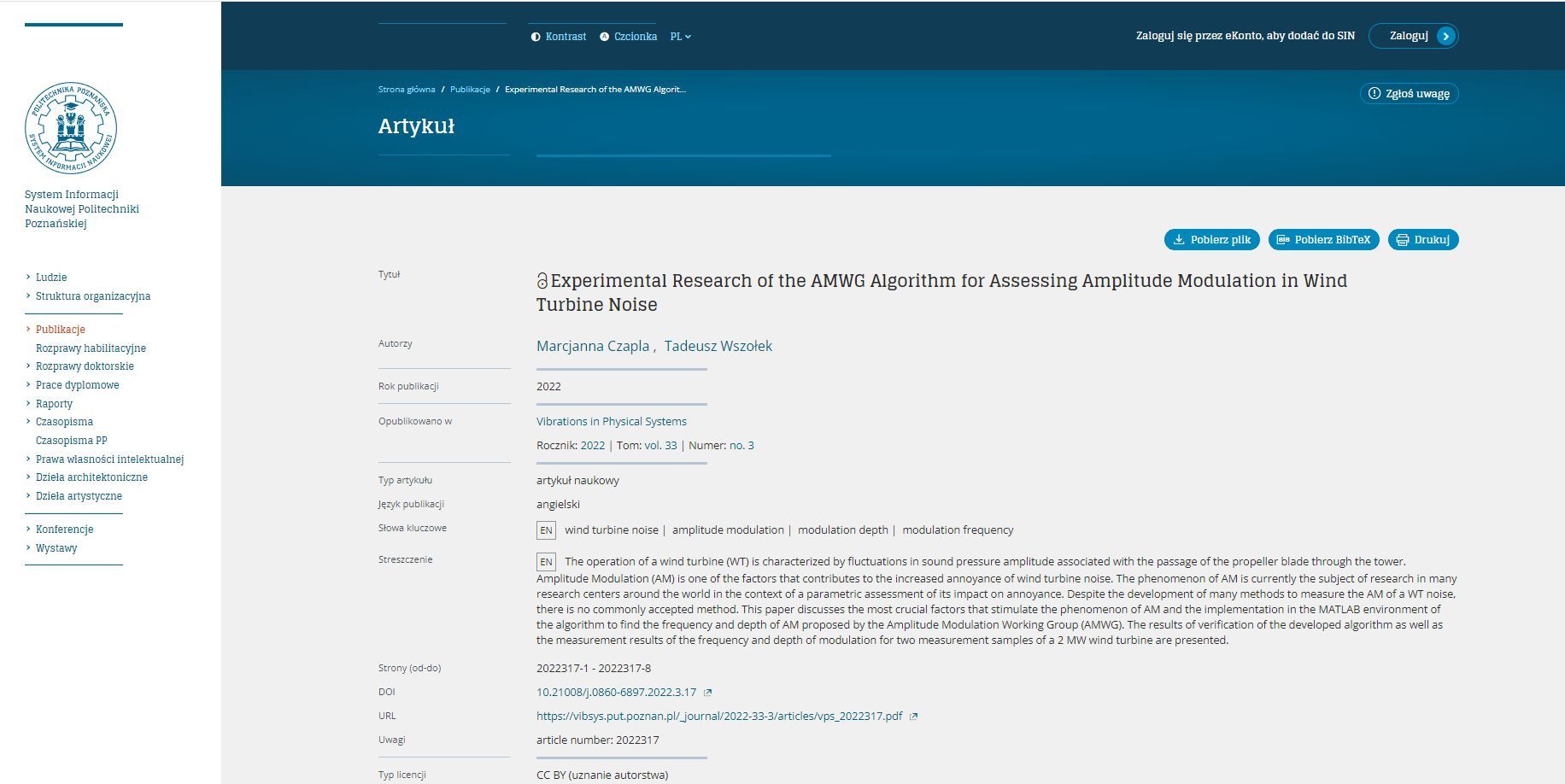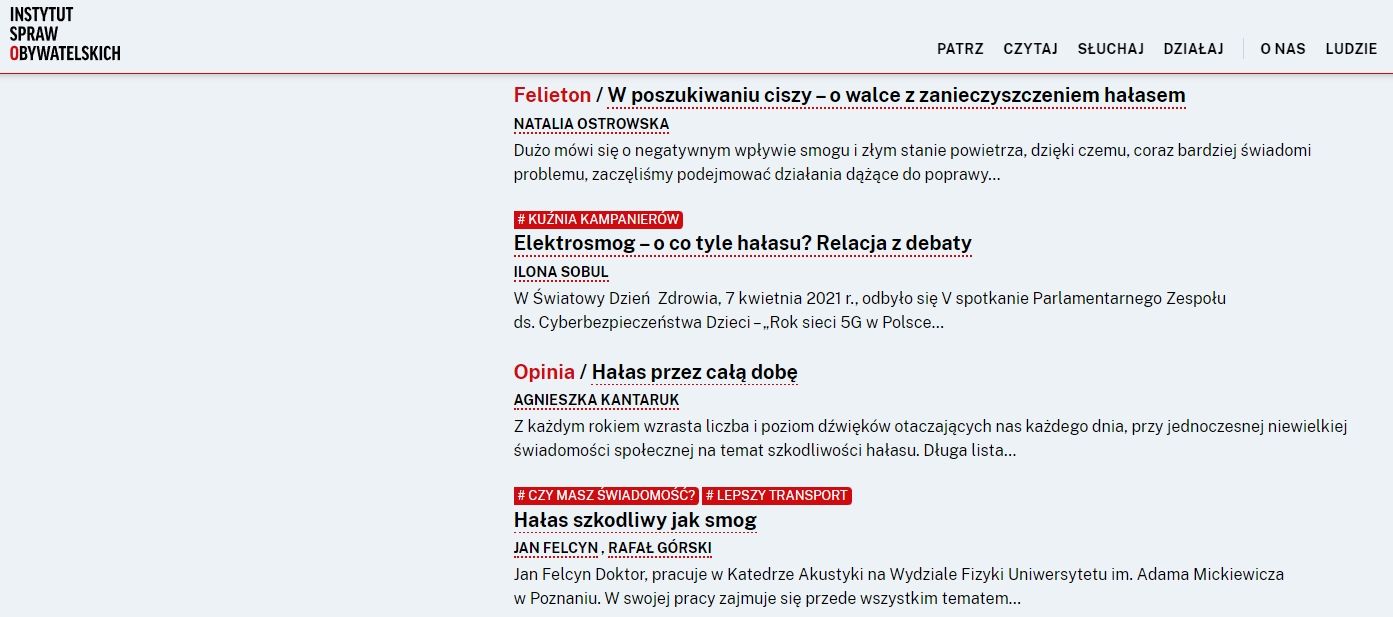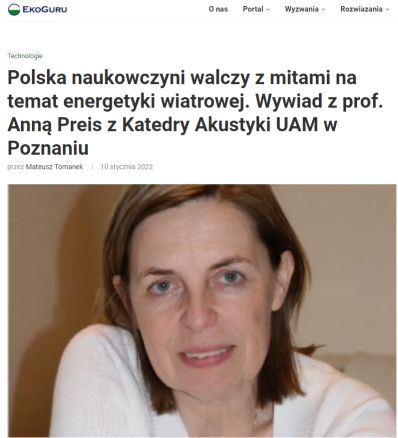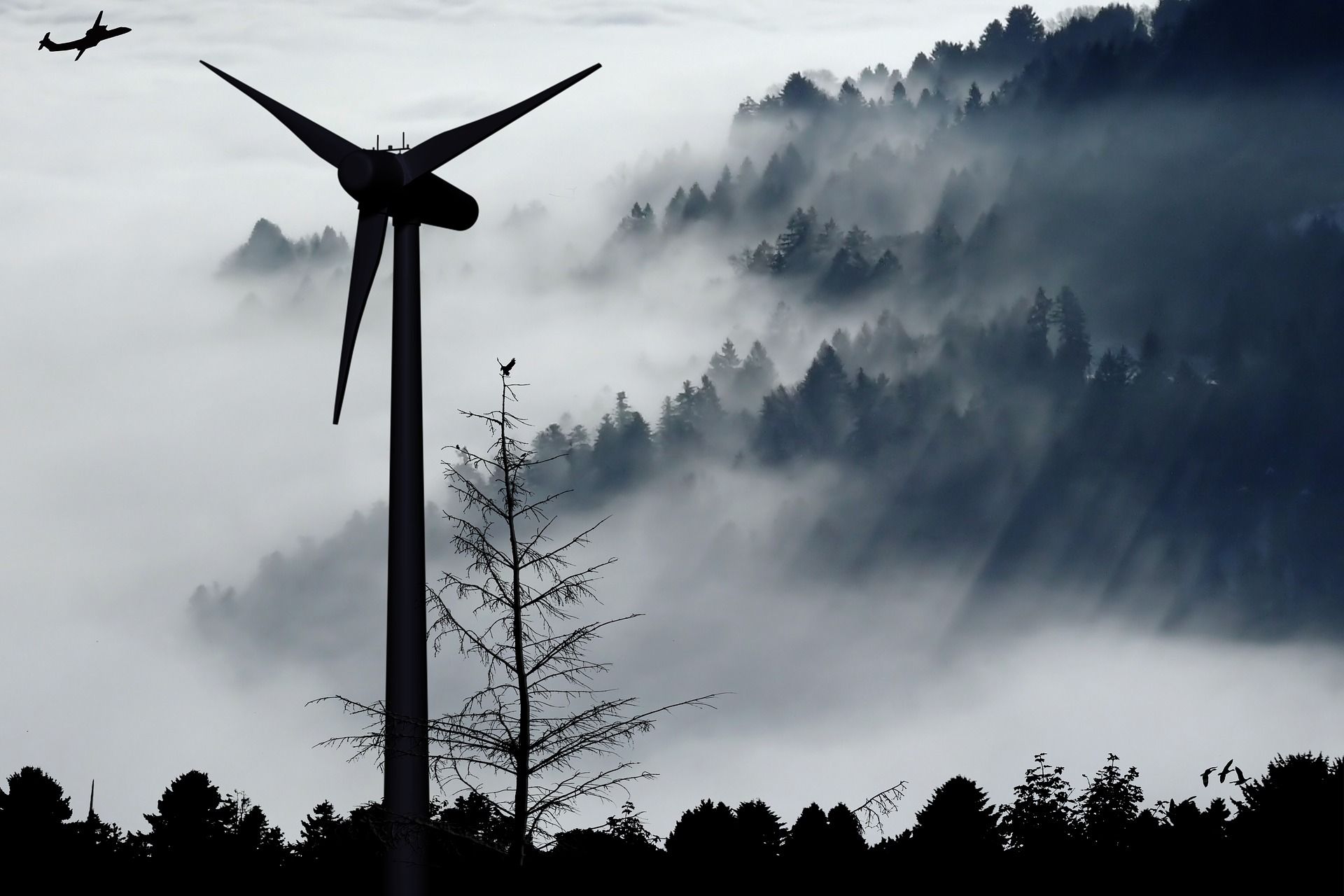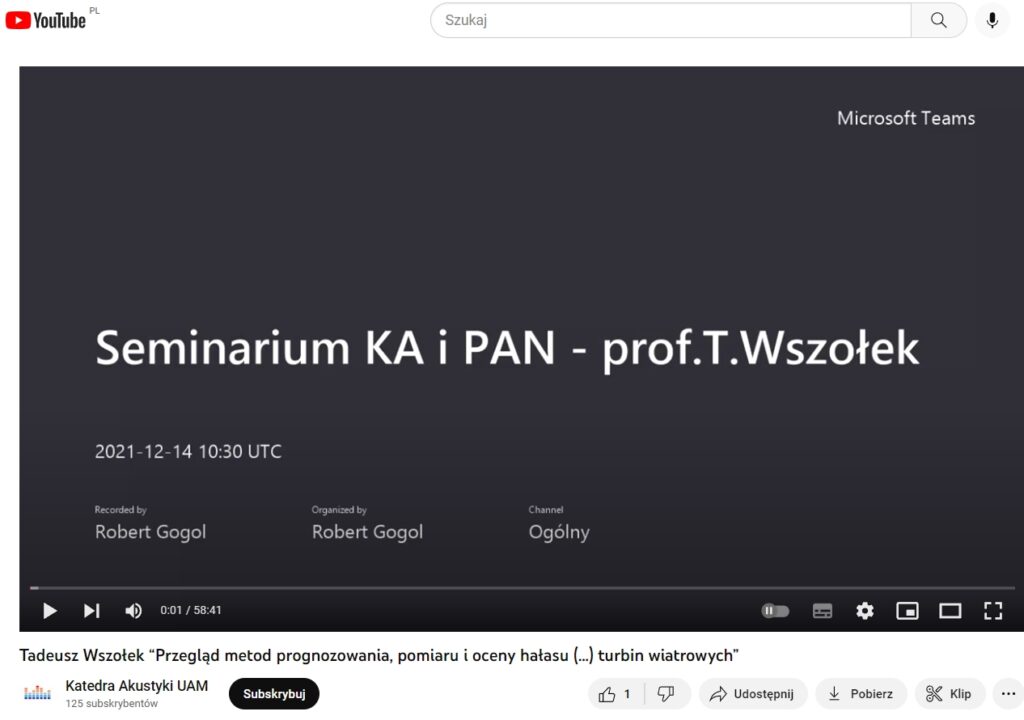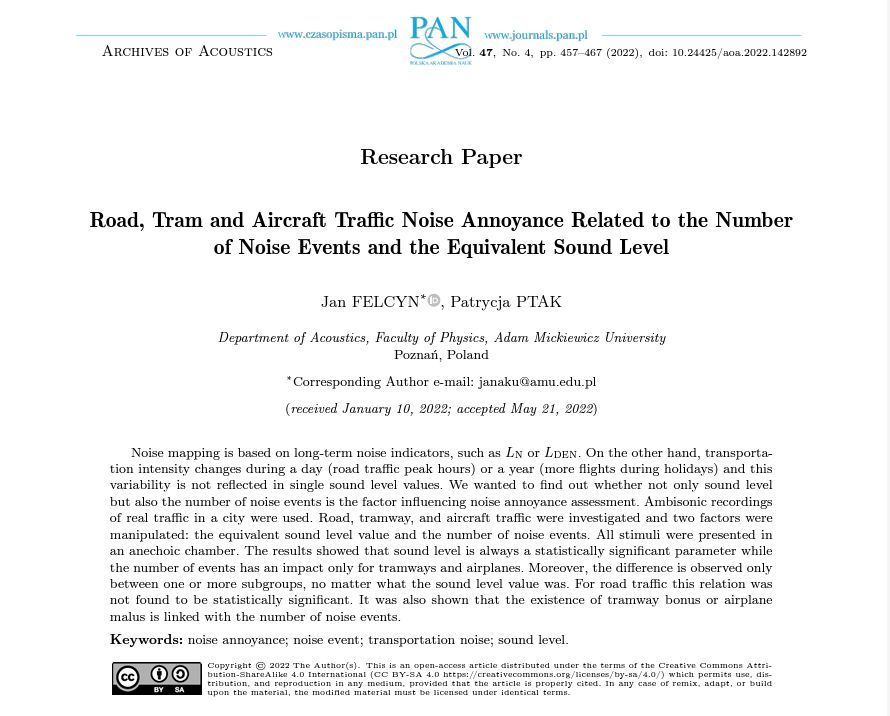3- Experimental Research of the AMWG Algorithm for Assessing Amplitude Modulation in Wind Turbine Noise
The operation of a wind turbine (WT) is characterized by fluctuations in sound pressure amplitude associated with the passage of the propeller blade through the tower. Amplitude Modulation (AM) is one of the factors that contributes to the increased annoyance of wind turbine noise. The phenomenon of AM is currently the subject of research in many research centers around the world in the context of a parametric assessment of its impact on annoyance. Despite the development of many methods to measure the AM of a WT noise, there is no commonly accepted method. This paper discusses the most crucial factors that stimulate the phenomenon of AM and the implementation in the MATLAB environment of the algorithm to find the frequency and depth of AM proposed by the Amplitude Modulation Working Group (AMWG). The results of verification of the developed algorithm as well as the measurement results of the frequency and depth of modulation for two measurement samples of a 2 MW wind turbine are presented.
